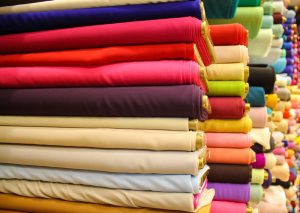Textile production has been a cornerstone of human civilization for millennia. From the earliest hand-spun fibers to the intricate machinery of the industrial revolution, the journey from fiber to fabric has witnessed constant innovation. Today, in the age of automation, this journey is undergoing another transformative shift. Automation is revolutionizing textile production, streamlining processes, increasing efficiency, and paving the way for a new era of textile manufacturing.
The Evolution Of Textile Production
The history of textile production is a narrative of innovation and adaptation. Early civilizations utilized natural fibers such as cotton, wool, and silk, weaving them by hand to create fabrics for clothing, shelter, and trade. The invention of the spinning wheel and the loom marked significant milestones, enabling faster and more efficient production.
The industrial revolution of the 18th and 19th centuries brought about dramatic changes in textile manufacturing. The invention of mechanized spinning and weaving machines, such as the spinning jenny and the power loom, heralded the transition from artisanal craftsmanship to large-scale production. Factories sprung up, powered by steam engines, and mass-produced textiles became more accessible to the masses.
Automation In Textile Production
The 20th century saw further advancements in textile machinery, with the introduction of automation technologies such as automatic looms and shuttleless weaving machines. These innovations reduced the need for manual labor and increased productivity. However, it is in the 21st century that automation has truly revolutionized textile production.
One of the key areas where automation has made a significant impact is in the spinning process. Traditional spinning involves converting raw fibers into yarn through a series of complex steps. Automation has streamlined this process through the use of advanced machinery such as rotor spinning and air-jet spinning machines. These machines can produce yarn at a much faster rate and with greater precision than traditional methods.
Similarly, automation has transformed the weaving process with the introduction of computerized looms. These looms are equipped with sophisticated sensors and control systems that enable them to adjust settings automatically, resulting in higher quality and consistency in the finished fabric. Additionally, automation has enabled the integration of digital design technologies, allowing designers to create intricate patterns and textures with ease.
Another area where automation has had a significant impact is in fabric dyeing and finishing. Traditional dyeing processes are labor-intensive and often involve the use of harmful chemicals. Automation has introduced more sustainable and efficient dyeing techniques such as continuous dyeing and digital printing. These methods not only reduce water and energy consumption but also minimize waste and environmental impact.
Challenges And Opportunities
While automation offers numerous benefits to the textile industry, it also presents challenges. One of the primary concerns is the displacement of workers as machines take over tasks that were previously done by hand. However, proponents argue that automation creates new opportunities for skilled workers in areas such as machine maintenance, programming, and design.
Another challenge is the upfront cost of investing in automation technology. While automation can lead to long-term cost savings through increased efficiency and productivity, the initial investment can be substantial, especially for small and medium-sized enterprises. Governments and industry stakeholders can play a role in addressing this challenge by providing incentives and support for businesses to adopt automation technology.
Despite these challenges, the future of textile production looks promising with automation at its helm. By embracing automation, textile manufacturers can improve product quality, reduce lead times, and respond more effectively to changing consumer demands. Furthermore, automation enables greater customization and flexibility in production, allowing manufacturers to cater to niche markets and individual customer preferences.
From fiber to fabric, automation is revolutionizing every step of the textile production process. By harnessing the power of advanced machinery, sensors, and control systems, manufacturers can achieve higher levels of efficiency, productivity, and sustainability. While challenges remain, the opportunities presented by automation are vast, promising a future where textile production is faster, smarter, and more responsive to the needs of consumers and the environment.
Editor’s Note: Rohit Dev Sethi is managing director for India-based ColossusTex.
June 24, 2024





